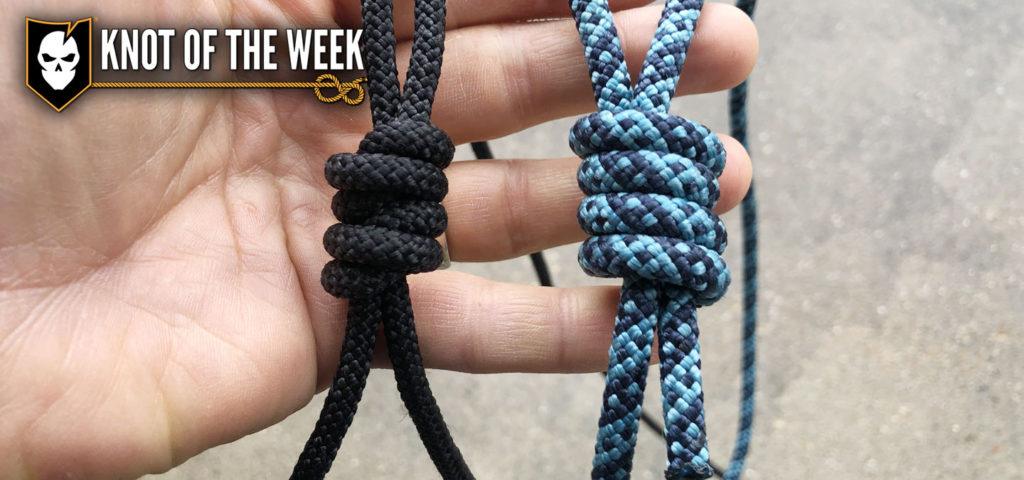The Double Fisherman’s Knot works very well with small or slippery lines, like the monofilament line used by fishing enthusiasts. Today we’ll examine tying the knot with two different lines and explain how it can be used to start a Prusik Loop.
In addition to the tying method, we offer a look at how this knot will fit into our continuing DIY Knot Board Display.
Double Fisherman’s Knot » Bends
(Strength: 5/Security: 5/Stability: 4/Difficulty: 3) See below for what these ratings mean.
You can use the Double Fisherman’s Knot to join two lengths of rope together or even to make a climbing equipment loop. In the past, we’ve also used this knot to secure things like a water bottle top to the bottle itself, creating a retention method.
Ratings
Strength/Security/Stability/Difficulty
Each knot will be assigned a rating from 1-5 (1 representing the lowest score) based on the following four properties:
Strength – All knots will weaken the strength of a rope, however, there are knots that are stronger than others. The scale here will reflect how strong the rope remains with the specified knot.
Security – The security scale refers to how well the knot will stay tied, and resist coming loose under a normal load.
Stability – Stability refers to how easily the knot will come untied under an abnormal load (i.e. the knot being pulled in a direction it was not intended to) A lower score here represents instability.
Difficulty – The lower the number, the easier a knot is to tie.

